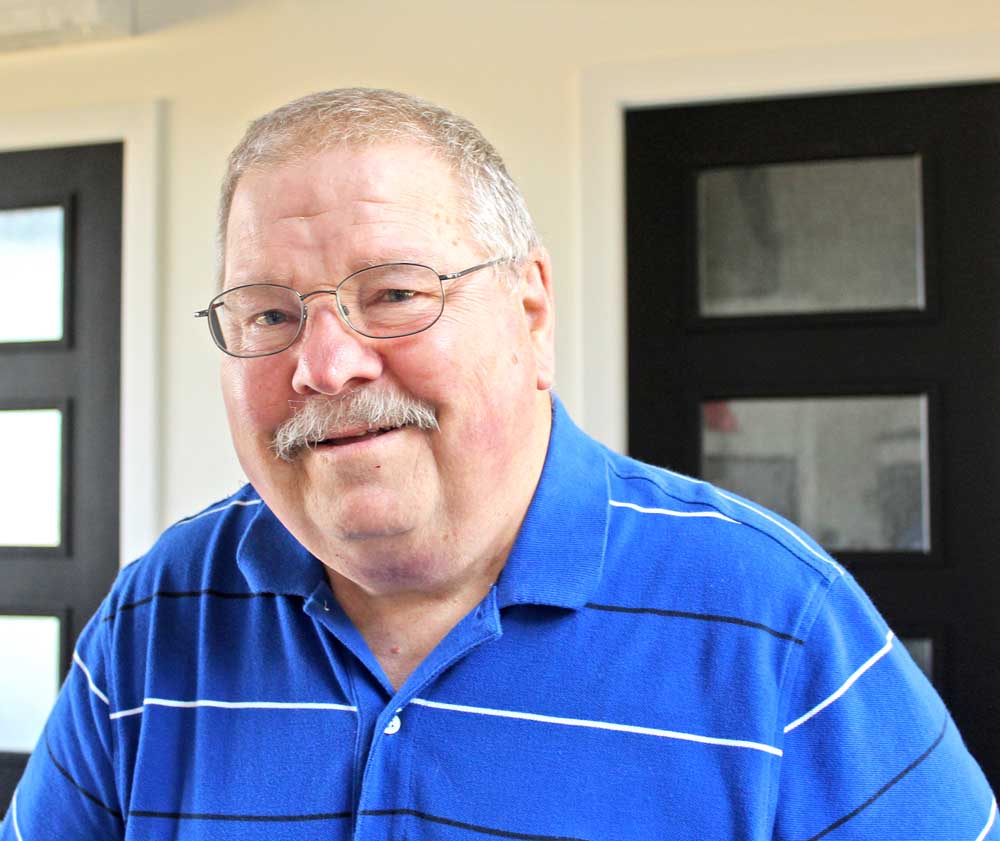Hooked on Navy aviation: Writer pens magnum opus
Published 9:00 am Thursday, July 29, 2021

- Peter Young of Long Beach is a retired U.S. Navy lieutenant who has written a novel whose hero’s assignments mirror his own; flying bombing missions over the North Vietnamese strategic supply route in Laos. Young started the novel in 1973, but says his civilian career as an analyst meant he didn’t have much energy left to write as a hobby until he retired. ‘When I think about doing something creative, it’s in words.’
LONG BEACH — It took a while for Peter Young to write his first novel.
Quite a while.
“One Hundred Stingers,” a book that features the air war over the Ho Chi Minh Trail, has just been published.
He started it while the American War in Vietnam was still raging.
Young has been a full-time resident of the Long Beach Peninsula for the past five years. He served as a U.S. Navy lieutenant then had a lengthy career as a private-sector analyst working on government contracts. He earned a doctorate in management and taught at university level.
He began his book decades ago.
Now, at 75, he is delighted it has been published, and is already thinking of his next.
‘Dazzled’ in childhood
Young recalled a memorable childhood. His father was a long-time journalist who worked in the Washington, D.C., bureau of the Chicago Tribune. When he died in 2000, United Press journalism legend Helen Thomas described Bob Young as “a wonderful storyteller” and a “superb newsman.”
Covering the White House brought him into contact with presidents Truman, Eisenhower, Kennedy and Johnson. “He was an ‘old-school’ journalist,” Young said. “He didn’t believe in editorializing. It was, ‘who, what, where, why.’”
Harry Truman had become president when Franklin Roosevelt died in 1945, but wasn’t widely favored to be elected to a full, four-year term in 1948. Young recalled that his father rode a train with Truman to the Democratic National Convention in Chicago that summer, witnessed adoring crowds, and told his disbelieving editor Truman had enough support to win. (One of the most famous photos of Truman is holding up the Tribune front page with the erroneous headline, “Dewey Defeats Truman”).
Bob Young witnessed history. He was in Colorado when President Eisenhower fell ill. In 1963, he was riding in the motorcade through Dallas when President Kennedy was assassinated. President Johnson hosted Young’s parents at his Texas ranch. “He just liked my father,” his son said.
At age 10, Peter Young auditioned for a boys choir at the National Cathedral in Washington and landed a place at its St. Albans prep school (attended by Al Gore and children of the Grahams, who owned the Washington Post).
With his older brother Robert already studying at the U.S. Naval Academy in Annapolis, Md., only 40 miles from his home, Young’s next step seemed inevitable.
“I got completely dazzled by the whole thing,” he recalled. “The spirit. The football. Marching. Boats. I thought that was the neatest thing in the whole wide world.”
Nonstop action
He graduated from high school in 1963, a year Kennedy visited Annapolis. The commander in chief delighted the plebes because he had carte blanche to wipe out all demerits.
Young’s schooling exposed him to shipboard experiences and inevitably swabbing decks. He was sold when he encountered naval aviation. “I just thought that was the neatest thing — flying. Vietnam was ‘warming up.’ It was 1965 to 6. The action was with aviation.”
He graduated amid disappointment that his slightly less than perfect eyesight meant the Navy would not train him as a pilot. The other assignment available was as a bombardier-navigator. The protagonist in his novel has the same duties and the novel’s timeline mirrors Young’s first deployment.
Navy aerial options included fighters or small bombers. A-6 Intruders, which flew from the decks of aircraft carriers rocking in the ocean waves, appealed. “It was very sophisticated for its time,” said Young, who is secretary of the Intruder Association, a 3,500-member group of sailors who flew or maintained them, who hold a reunion every other year. He is also a member of the Tailhook Association, a group for service people with carrier connections.
He traveled to Washington’s Whidbey Island Naval Air Station where a shortage of aircraft — because so many were being shot down — elongated his training. He recalled flying 500 mph over some remote locations just 200 feet off the ground. “We used to terrify the good people of Oregon,” he quipped.
‘Fun and exciting’
Eventually, in 1969, he deployed to Southeast Asia.
“It was fun and exciting. You never felt more alive,” he said, but added, “I worried about being shot down or captured.”
He flew 97 missions, first flying from the USS Ranger aircraft carrier and later assigned to the USS Midway. An admiral seeking an aide recruited him away from his bombing missions. Years later, he would become a docent showing tourists around the Midway, which became a museum, berthed three blocks from his San Diego home.
He earned the Navy Commendation Medal with the Combat ‘V” (valor) and the Air Medal. After his 10 years in uniform, he took private sector jobs. He was a single father with two children aged 4 and 7 when he remarried. He and Darlene have celebrated 45 years. He noted that she will be a key collaborator in the next writing project, a murder mystery drawing on his love of American history. It begins at the Gettysburg battlefield he visited as a child.
Stimulated by coastal writers
They moved to Portland in 2009 and made regular trips to their beach house in Klipsan, moving permanently five years ago and more recently building a house.
He retired in 2016. The novel was in his thoughts. With one chapter completed, Young had stalled. He rationalized that because his day job had involved detailed technical writing on command systems, he never made progress on the novel. Any spare energy was spent on another hobby, training adult leaders in the Boy Scouts.
He had hand-written the first chapter in 1973 and is amused that it remained intact in the published version while the draft of the last chapter, which he had written next, did not. He attended a writing workshop and was inspired to pick up the pace. Support, and being encouraged to create a detailed outline, made the difference. “I’m stimulated by the local writing community,” he said.
He broadened his online research to first-person accounts penned by survivors of the bombing. They described life in the jungles of Laos, an adjoining country that was supposedly neutral, which the North Vietnamese were using to bring replacement personnel and materiel into the war zone. The strategic supply route was nicknamed for their leader, Ho Chi Minh.
“One Hundred Stingers” was published in May by Peter Adams Young. He added his middle name to avoid confusion with other writers. It is 816 pages, including source references, a 12-page glossary of military abbreviations and sometimes vulgar slang in three languages, and appendices highlighting military command structures. The cover, which shows Intruder aircraft, is by Oregon artist Jim Horsley, who flew in the same era and later for the Blue Angels display team.
Young conceded some readers may question the length. But it’s clear he is pleased, not just that his book is completed, but with what he has accomplished.
“I have always been a ‘wordsmith.’ That’s my term. I think in word terms. I don’t paint. I don’t sculpt. When I think about doing something creative, it’s in words.”
And the delay?
“Real life got in the way.”
“One-Hundred Stingers”
A novel of the air war over the Ho Chi Minh Trail
By Peter Adams Young
$24.99, www.amazon.com or www.nestuccapress.com ($5 shipping); Time Enough Books, Ilwaco and Beach Books in Seaside.









